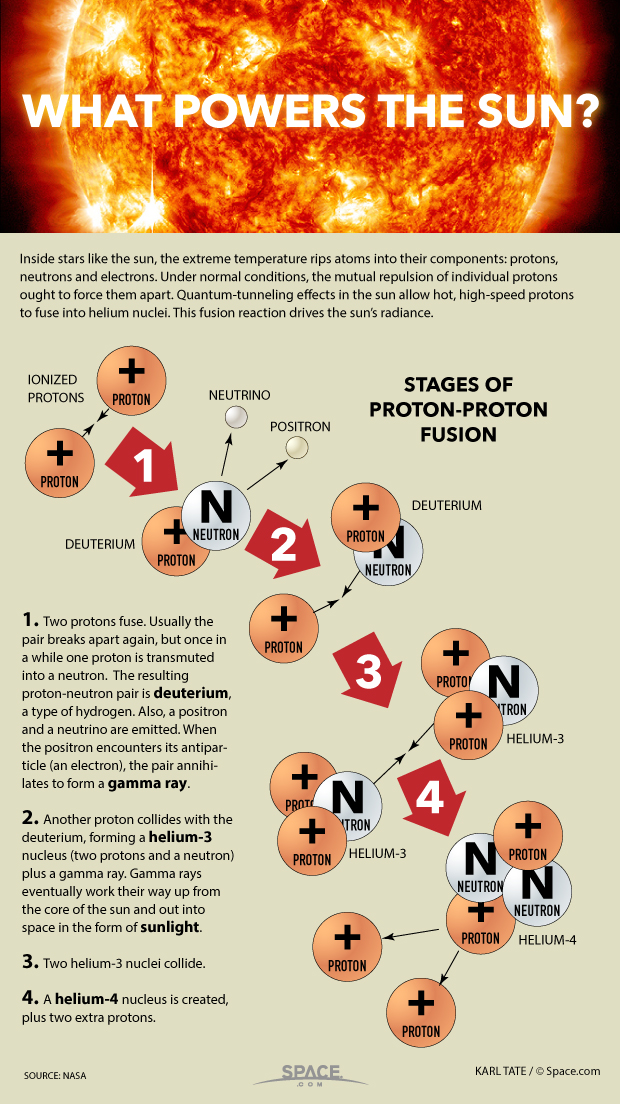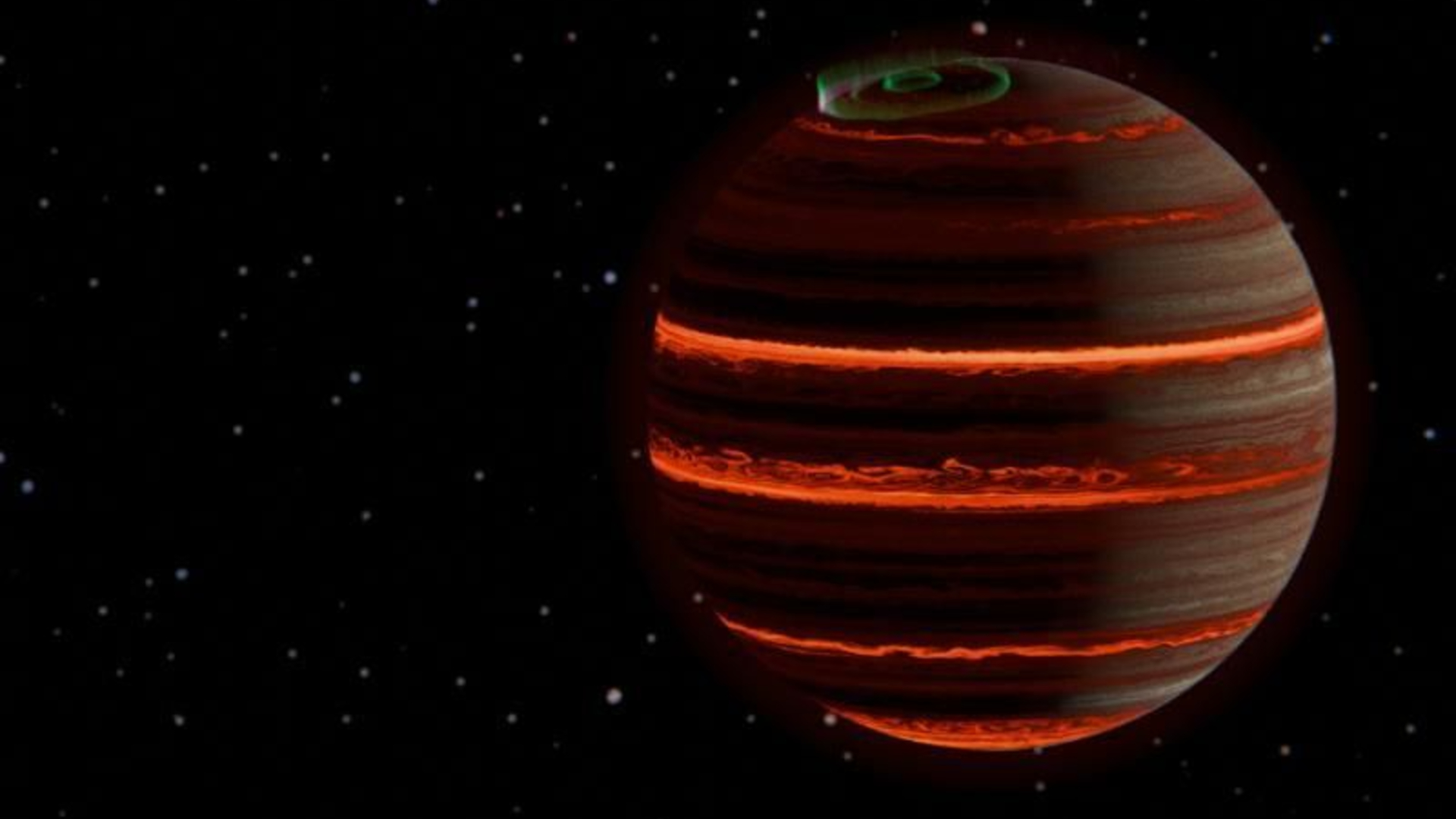Proton Fusion, the Sun's Power Source, Explained (Infographic)

Inside stars like the sun, the extreme temperature rips atoms into their components: protons, neutrons and electrons. Under normal conditions, the mutual repulsion of individual protons ought to force them apart. Quantum-tunneling effects in the sun allow hot, high-speed protons to fuse into helium nuclei. This fusion reaction drives the sun’s radiance.
In the proton-proton fusion reaction, first two protons fuse. Usually the pair breaks apart again immediately, but once in a while one of the protons is transmuted into a neutron. The resulting proton-neutron pair is deuterium, a type of hydrogen. Also, a positron and a neutrino are emitted. When the positron encounters its antiparticle (an electron), the pair annihilates to form a gamma ray.
Then, another proton collides with the deuterium nucleus, forming a helium-3 nucleus (two protons and a neutron) plus a gamma ray. Gamma rays eventually work their way up from the core of the sun and out into space in the form of sunlight.
The helium-3 nucleus collides with another one, creating a helium-4 nucleus, plus two extra protons.
Solar Quiz: How Well Do You Know Our Sun?
The Sun in HD: Latest Photos by NASA's Solar Dynamics Observatory
Anatomy of Sun Storms & Solar Flares (Infographic)
Breaking space news, the latest updates on rocket launches, skywatching events and more!
Join our Space Forums to keep talking space on the latest missions, night sky and more! And if you have a news tip, correction or comment, let us know at: community@space.com.

Karl's association with Space.com goes back to 2000, when he was hired to produce interactive Flash graphics. From 2010 to 2016, Karl worked as an infographics specialist across all editorial properties of Purch (formerly known as TechMediaNetwork). Before joining Space.com, Karl spent 11 years at the New York headquarters of The Associated Press, creating news graphics for use around the world in newspapers and on the web. He has a degree in graphic design from Louisiana State University and now works as a freelance graphic designer in New York City.
